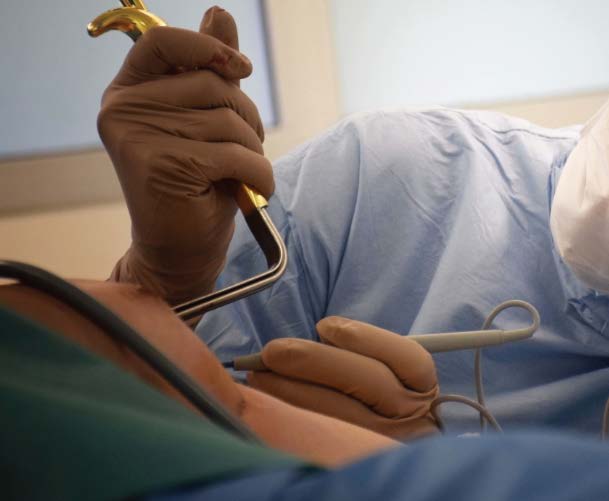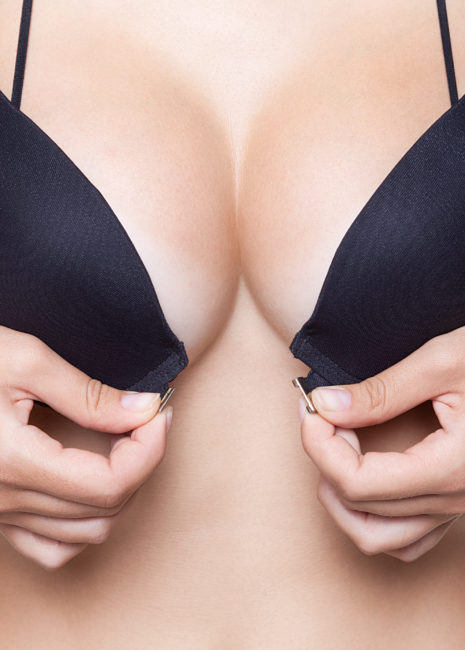Breast


Breast Procedures
-
Breast augmentation is a procedure that enhances the appearance of the breasts by not only increasing their size but also accentuating their shape. Each procedure is unique since it is tailored to different goals that each patient has. Volume loss after pregnancy and/or nursing is a common reason why some patients want a breast augmentation in order to improve and increase their profile. There are many patient-dependent factors that affect the final appearance after a breast augmentation— including the height and width of the chest, volume of the existing breast tissue, and the skin quality. In patients who desire a breast augmentation but also have sagging breasts, Dr. Golpanian often recommends a breast lift with an augmentation either in one surgery or two, depending on the case.
-
This is an innovative surgical procedure in which Dr. Golpanian uses your own fat tissue to either enhance the size of your breasts or conceal certain irregularities that may exist from prior breast surgery. This surgery involves liposuction, in which areas of fat deposits are accessed to harvest tissue. It is important to understand that this procedure depends on the available fat sources in your body and the degree of augmentation you desire. While each breast can be enhanced by only about a half to one full cup size in a single procedure, increasing the size by more than a full cup size may require multiple staged procedures.
-
A breast lift, or a mastopexy, is a procedure to elevate and reshape the breasts. Aging, natural stretching of breast suspensory ligaments, and loss of skin elasticity lead to drooping breasts. Oftentimes the quality and volume of breast tissue decreases after breastfeeding or weight loss, causing the breasts to lose their natural firmness. Together these changes can all cause the appearance of saggy and deflated breasts, which is unsettling for some women. A breast lift procedure reshapes the breasts and allows for a more naturally youthful look. Dr. Golpanian often performs this procedure in conjunction with a breast augmentation in certain patients who desire a more enhanced appearance.
-
Often with pregnancy, aging, or weight loss, the breasts can sag but also lose volume, making them appear flatter with low-hanging nipples—a source of emotional anxiety for many women. In these cases, Dr. Golpanian uses a combination approach by performing a breast augmentation with a lift, which is an augmentation-mastopexy. This provides a comprehensive approach in which the breast ptosis, or drooping, is corrected while the size and shape is restored to a younger, fuller, and perkier breast aesthetic.
-
Breast reduction, or a reduction mammaplasty, is a procedure that removes excess skin, fat, and glandular breast tissue in women with overly large breasts. Large breasts can cause emotional anxiety but also many physical symptoms including neck pain, back pain, shoulder pain, and postural problems. Additionally, many women complain about difficulty exercising and living a comfortable lifestyle. During this procedure, the breasts are reduced in size and reshaped to result in lighter, smaller, and more youthful appearing breasts. Importantly, after this surgery patients feel like they have a more proportionate, aesthetically pleasing appearance, can fit better into clothing, live a healthier and more comfortable lifestyle, and improved confidence.
-
Men of any age can develop gynecomastia, a condition of enlarged breasts in males, and can be due to heredity conditions, various diseases, hormonal changes, or the use of certain drugs. Gynecomastia can cause concern with self-image, confidence, physical activity abilities, and even intimacy issues. In some patients the excess tissue in gynecomastia is glandular (similar to tissue found in female breasts) while in others it’s fatty (like fat tissue in other parts of the body). Most commonly, it is a combination of both, and depending on the tissue type a male breast reduction can involve surgical excision of the tissue, liposuction, or a combination of both. Since gynecomastia is often a source of embarrassment and “feminizing” for some patients, this procedure can be life-changing for many men.
-
Saline Implants
Saline implants are the only FDA-approved breast implants for patients 18-21. They can be positioned over or under the muscle and they are filled with sterile water. Once filled to their appropriate levels they are checked, and adjusted if necessary, for symmetry to give the best aesthetic result. Breast augmentation with saline implants look the same as those with silicone, however they feel less natural than silicone implants. If saline implants rupture, it is immediately noticed as the breast deflates. The body absorbs the sterile fluid and it is not harmful.Silicone Implants
Silicone implants are filled with a viscous silicone gel and feel more like a natural breast when compared to saline implants. There are various types of silicone implants with regards to shape, texture, and cohesiveness. Depending on your personal preferences, Dr. Golpanian works very closely with you to choose the best type of implant in order to provide the most aesthetic result. Silicone implants can rupture, and are not easily noticeable as compared to saline implant rupture. For this reason, the FDA recommends surveillance imaging of silicone breast implants every several years, with high resolution ultrasound or MRI, to detect for this. -
Breast implant illness, or BII, is an umbrella term used for a self-diagnosed condition in which women experience adverse reactions that are associated with their implants. These symptoms can include chronic fatigue, hair loss, rashes, muscle or joint pain, memory problems, anxiety, depression, and sleep disturbances. BII can occur with saline or silicone implants. While the science behind breast implant illness is still evolving, we are finding an association between this condition and patients with autoimmune disorders. Although breast implant illness is not yet considered an official diagnosis, Dr. Golpanian considers his patients’ health and well-being paramount and closely monitors for any signs or symptoms of BII. Dr. Golpanian believes that the best treatment for BII is implant removal, also known as explant surgery. After removal of the implants the breasts change in size and shape and Dr. Golpanian may offer a breast lift and/or fat transfer to ensure a beautiful, refined result.
-
Nipple inversion affects less than 5% of all men and women, and while not common, it can be a source of embarrassment and issues with breastfeeding for many patients. Nipple inversion is due to short or tight milk ducts, or subareolar fibro-ductal tissue, which can pull the nipple inward or flat against the breast surface. It is oftentimes hereditary and present at birth, but can occur later in life as well. Additionally, there are various severities of nipple inversion and can affect one of both nipples. Dr. Golpanian correct nipple inversion by performing a simple surgery to release the foreshortened milk ducts, while sparing them for future breastfeeding, and allowing the nipple to protrude outwards. It will leave you with minimal scarring, and a natural appearing everted nipple.
-
The areola, or the colored skin around the nipples, can vary in appearance between individuals or even between breasts. They can widely range in shape, size, and color. While genetics play a common role in oversized areolas, they can also be the result of aging, weight loss, or pregnancy. For many patients this can be a source of insecurity. Dr. Golpanian performs an areolar reduction surgery to reduce the diameter of the areola and improving its appearance. This surgery can be performed alone or in combination with a breast reduction, breast lift, or breast augmentation.
-
Revision surgery, also known as corrective surgery, is performed to correct a prior surgery and can be a second, third, or even fourth round of the same surgery in order to make an aesthetic or functional adjustment. Patients can be unsatisfied with their initial results for a variety of reasons including, but not limited to, capsular contracture, asymmetry, deflated implants, improper sized implants, wrinkling, or just the overall aesthetic appearance. Unfortunately, the ideal post-operative results are not always achieved and this can be a great source of anxiety and frustration for patients. Dr. Golpanian loves to see and help patients who have had a less than ideal outcome with another surgeon. He importantly allows a proper amount of time to pass before performing corrective breast surgery, since he wants to give the body enough time to heal from the swelling and inflammation so that any existing issue is not worsened.
It is important to understand that not every unsatisfactory result is due to surgeon error and changes to the breast after surgery can be affected weight loss, scarring, pregnancy, aging, and just gravity. Since the breasts are a high-maintenance area that are prone to different changes in each person, Dr. Golpanian works closely with you to develop a unique surgical plan to restore your physical concerns and improve your quality of life.


